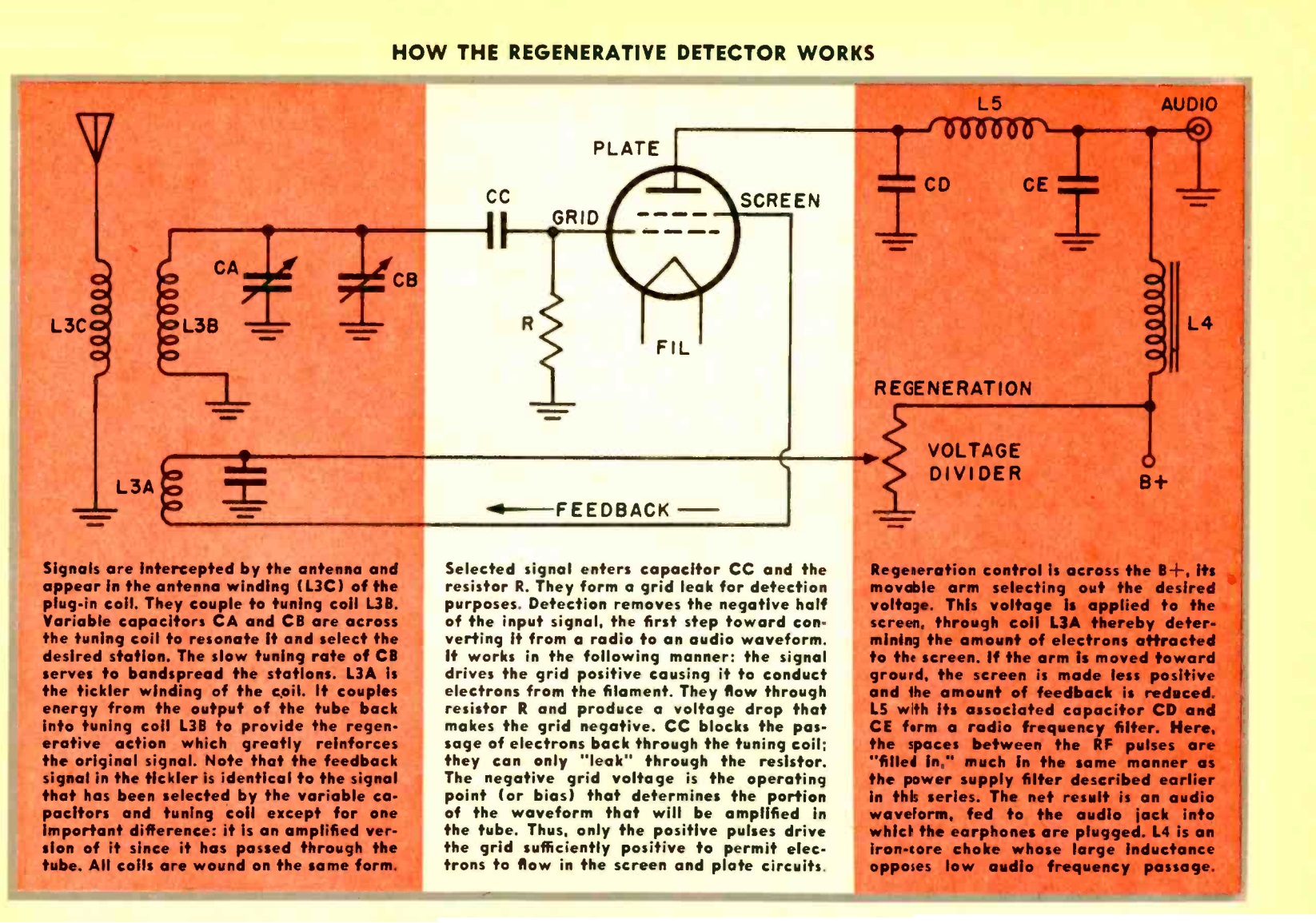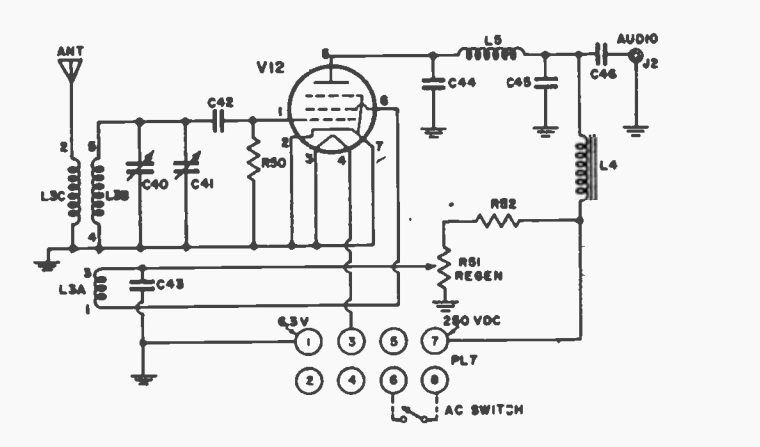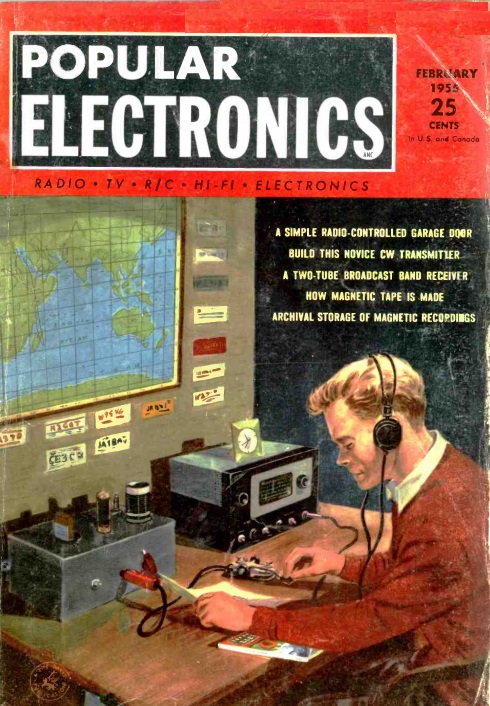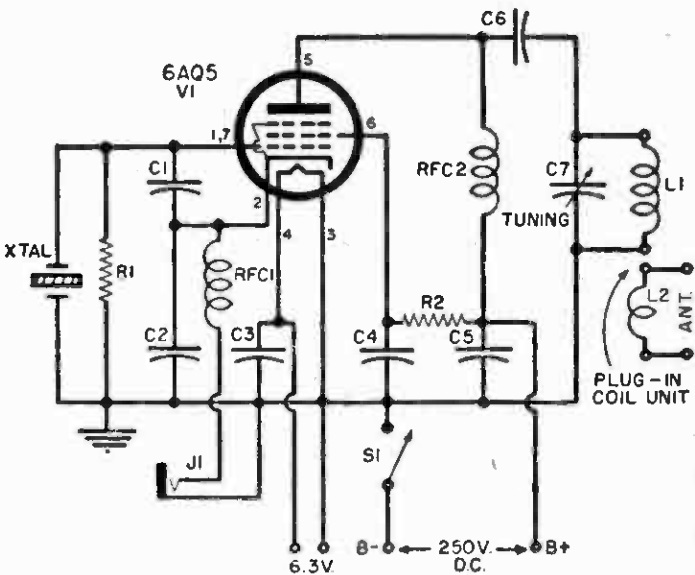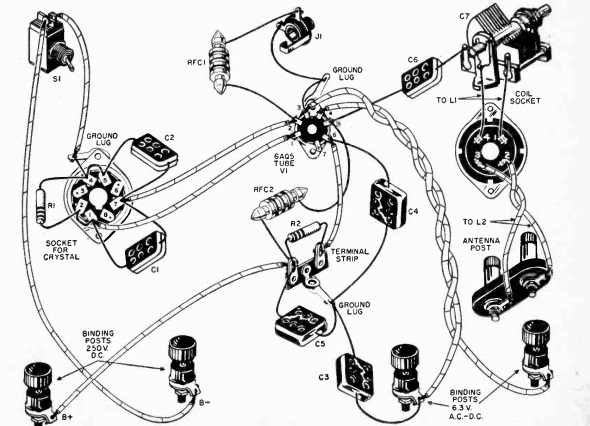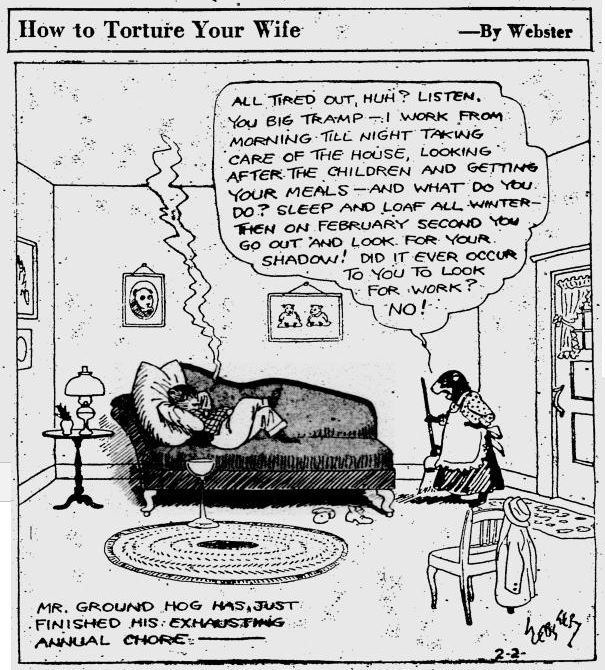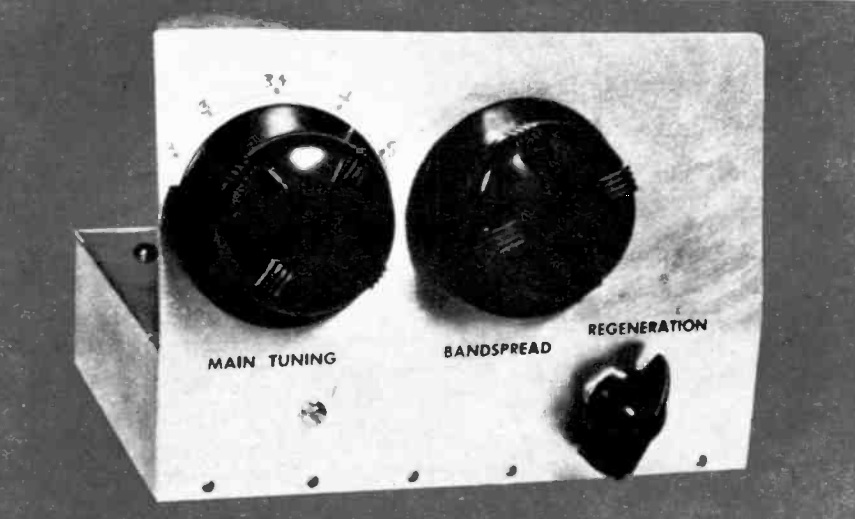 Sixty years ago this month, the February 1960 issue of Electronics Illustrated carried the plans for this one-tube regenerative shortwave tuner. The article was part 6 in the magazine’s build-it course, and the new tuner was designed to plug into the existing projects, which already included AM and FM tuners. For that reason, this receiver contains no power supply or audio amplifier. The cord with the 8-pin plug was keyed to fit the rest of the project, and the shortwave tuner took the place of the FM tuner.
Sixty years ago this month, the February 1960 issue of Electronics Illustrated carried the plans for this one-tube regenerative shortwave tuner. The article was part 6 in the magazine’s build-it course, and the new tuner was designed to plug into the existing projects, which already included AM and FM tuners. For that reason, this receiver contains no power supply or audio amplifier. The cord with the 8-pin plug was keyed to fit the rest of the project, and the shortwave tuner took the place of the FM tuner.
The circuit used a 6BC5 tube. One notable feature is that the regeneration was taken from the screen grid of the tube, rather than the plate. The regeneration control was a voltage divider which varied the positive voltage to the screen.
Since the article was part of a course, in addition to the exact schematic diagram, it also included a simplified diagram along with an explanation of each part of the circuit. From most browsers, click twice on the image for an enlarged version.
Here is the actual schematic for constructing the receiver:

